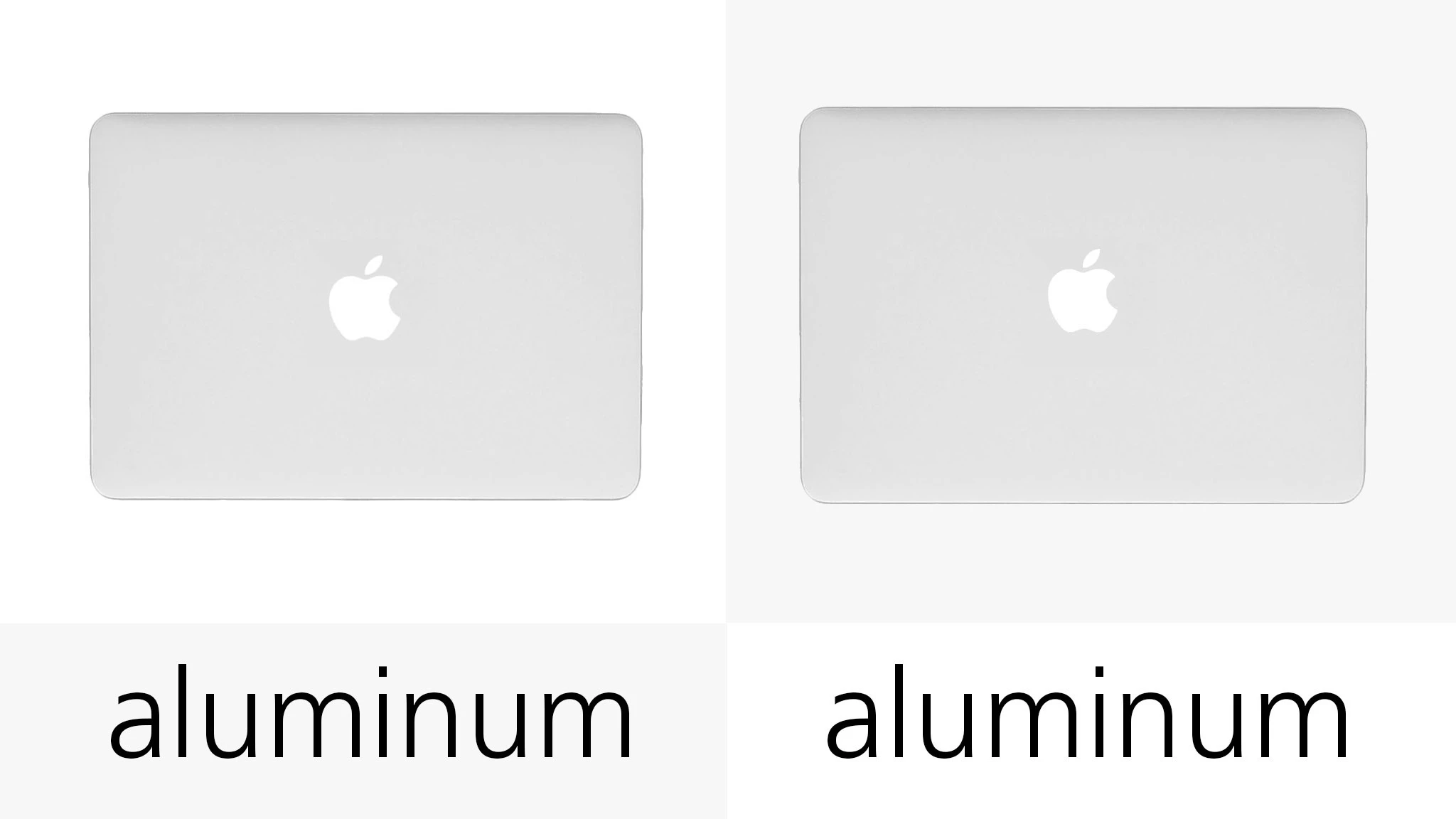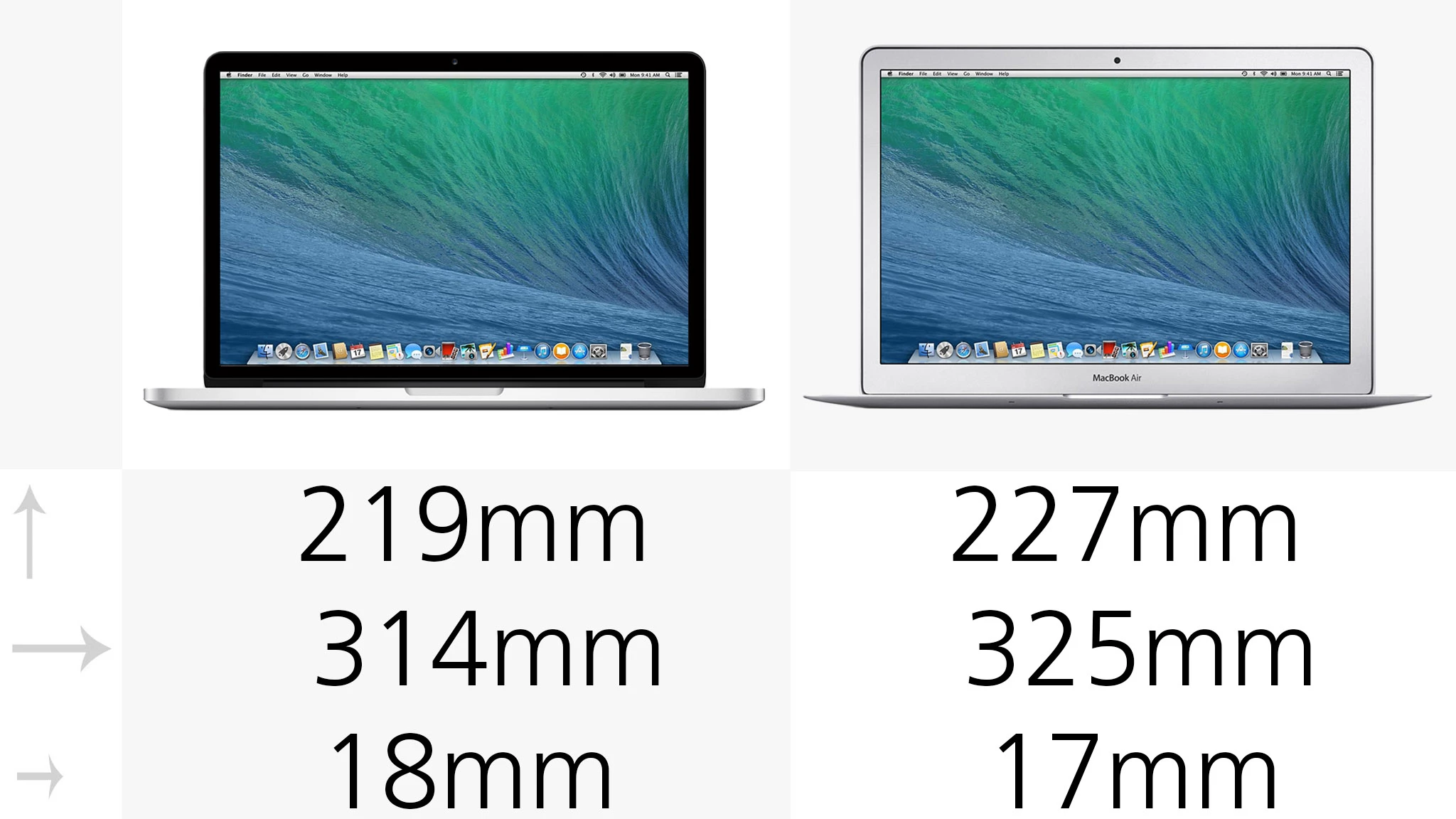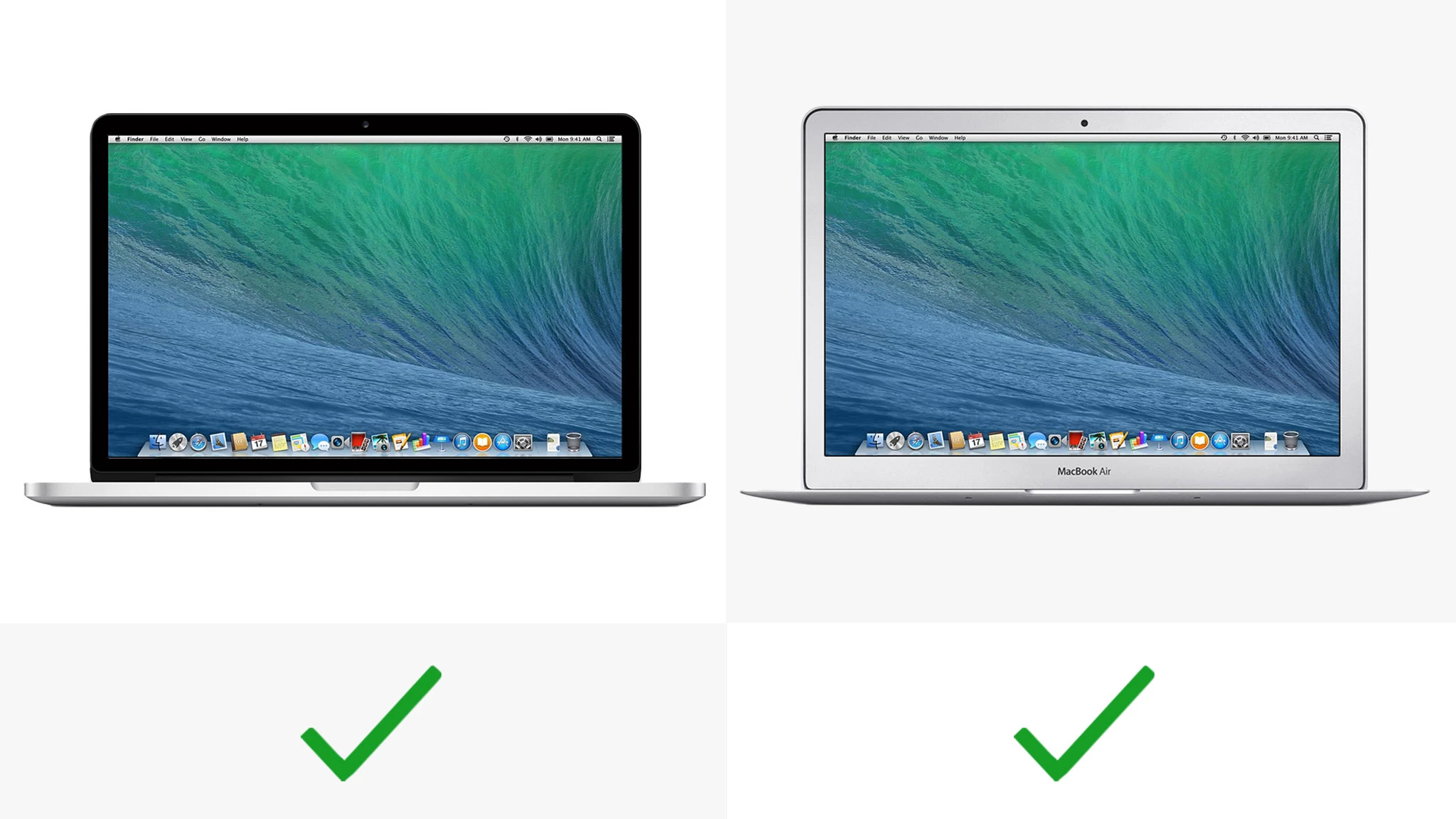After Apple refreshed its MacBook Pro with Retina Display lineup last week, perhaps you're wondering how the new models compare to Apple's other flagship notebook, the MacBook Air? Let's put the two side-by-side to compare their features and specs.
Before we jump in, note that we're comparing the 13-in models of both MacBooks. The Retina MacBook Pro is also sold in a larger 15-in version, while the Air also comes in a smaller 11-in model. We're focusing on the common ground where the two do direct battle.
Size

Nothing has changed here, as the new Retina MacBooks have identical exteriors to the last (late 2013) model. That still has the Air measuring 4 percent taller and 3 percent wider.
As for depth, well, you'll want to take this measurement with a few grains of salt. It only accounts for the thickest point of the MacBook Air, which is tapered. The MacBook Pro has a uniform thickness and, in practice, isn't nearly as close to the Air's razor-thin build as this 1 mm discrepancy would suggest.
Weight

Despite having a larger face, the MacBook Air is still 14 percent lighter than the rMBP. This is one of the biggest reasons to choose the Air over the Pro.
Build

No surprises here, as both MacBooks have slick unibody builds, forged out of Apple's favorite, aluminum.
Backlit keyboard

Apple's MacBooks keyboards are still hard to beat, and, like all modern MacBooks, these have adjustable backlit keys so you can hammer away at your masterpiece in the dark.
Display (size)

You'll find a 13.3-in screen on each of this notebooks.
Display (resolution)
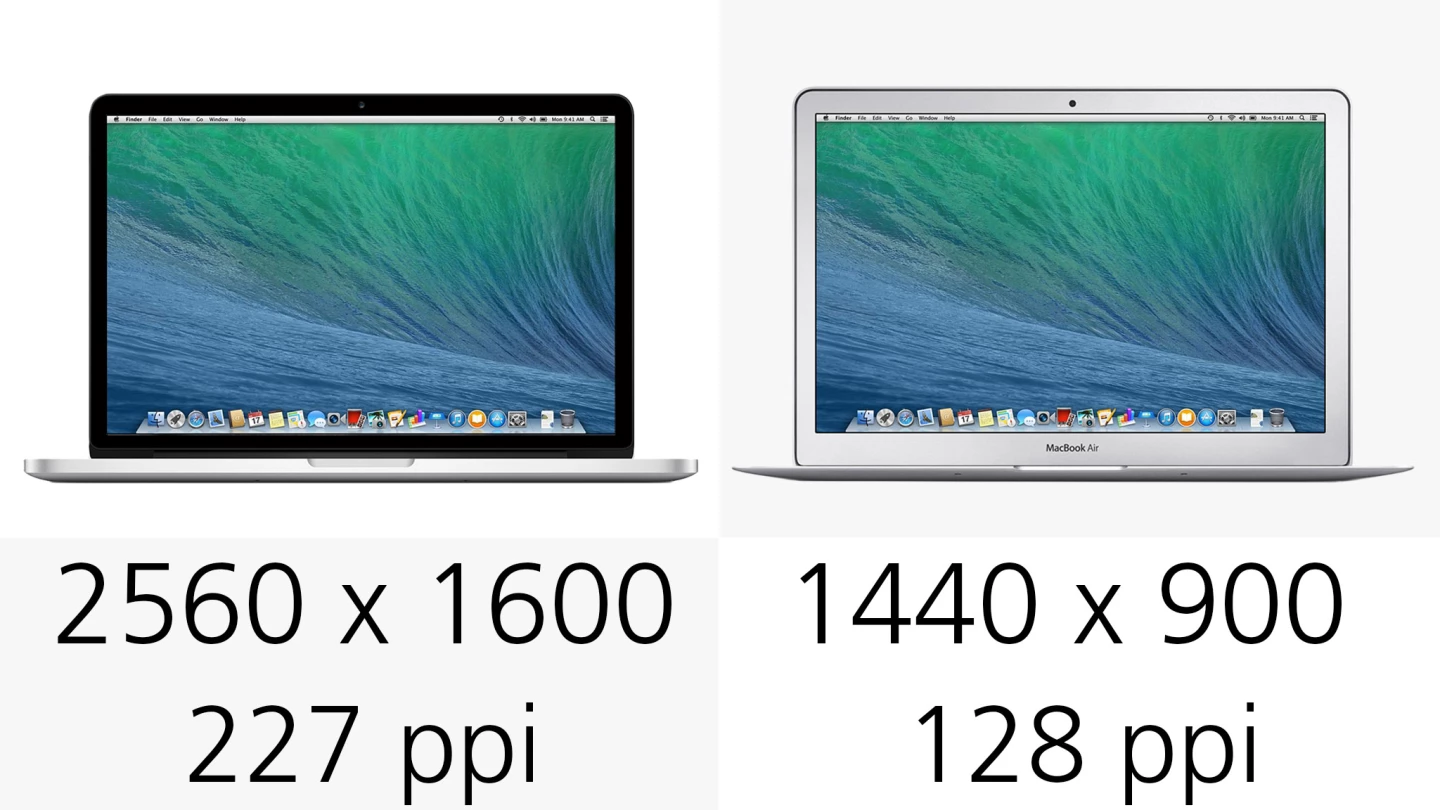
This is still the most obvious reason to pay extra for the Retina MacBook Pro. It gives you 216 percent more pixels than the MacBook Air's mid-ranged resolution does, providing a much clearer and crisper window into your content.
Touch screen

Windows 8 and 8.1 have moved notebooks into the realm of touch, but Apple hasn't shown any interest in traveling that road. And with the large and responsive glass trackpads that you'll find on Apple's MacBooks, it's hard to argue that they're missing out.
Processor

The Retina MacBook is still the more powerful machine, and it widened that gap a little more with the speed boost in these mid-2014 models. Also keep in mind that we're only looking at the entry-level CPUs in each machine: you can pay more to configure both machines with (up to) Intel Core i7s.
Graphics

The MacBook Pro with Retina Display still has a (slight) advantage with its integrated Intel Iris GPU.
RAM

This is another big boost over the late 2013 Retina MacBooks, as all new models ship with a minimum 8 GB of RAM. This should be especially handy if you like to run Windows in virtualization software like Parallels or VMware Fusion.
Storage

No changes here, and the only difference between the two notebooks is that the rMBP has an extra 1 TB tier (as a paid upgrade) that the Air doesn't offer. The Air's 512 GB model is, likewise, a made-to-order configuration.
USB 3.0 ports

Both machines provide two USB 3.0 ports each.
Thunderbolt ports

The Retina MacBook has two Thunderbolt ports, while the 13-in Air only offers one.
SDXC reader

Each laptop has one full-sized SD card slot.
Video out
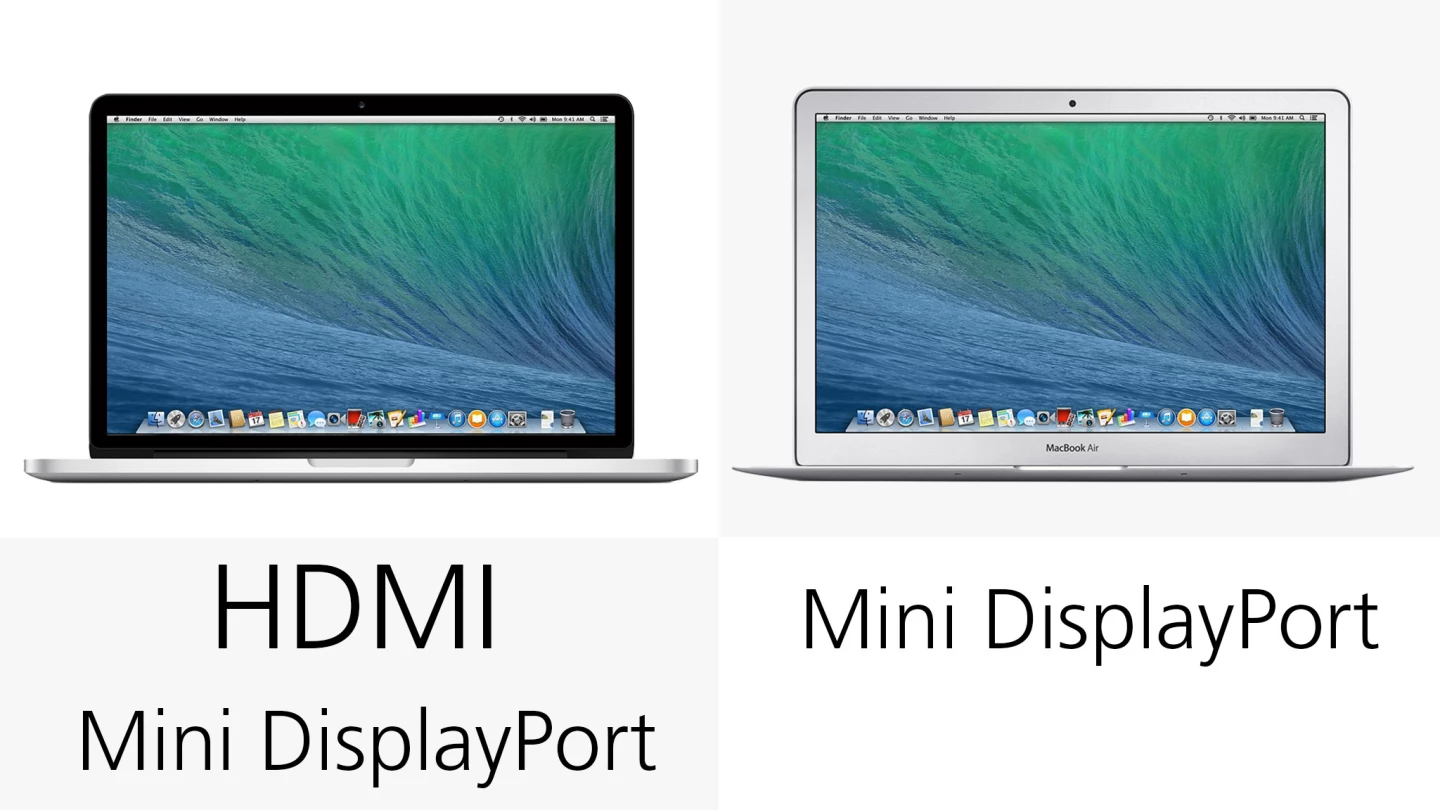
If you want to see your MacBook's display on a TV or desktop monitor, the Retina MacBook gives you the option of plugging in a standard HDMI cable. For the Air, you'll need to connect that HDMI to a Mini DisplayPort adapter (which its Thunderbolt port is backwards-compatible with) or perhaps route something through the USB port.
Camera

Each machine has a 720p front-facing webcam on board.
Battery

No battery boost for the new Retina model, as the Air is still going to give you a few extra hours with typical use. That's one of the few advantages of going with the Air's lower-resolution screen.
Wi-Fi

In addition to older standards, both of the latest MacBooks are ready to roll with the latest (and fastest) 802.11ac Wi-Fi standard. Of course you'll also need an 802.11ac compatible router to enjoy those faster speeds and, unless your internet service is unusually zippy, you might only notice a difference across your local network (as opposed to when downloading files or streaming media from the internet).
Software

Both Macs ship with OS X Mavericks. When it releases later this (Northern) Fall, the redesigned OS X Yosemite will be a free download for both machines.
Release

Apple just launched this slight refresh to the Retina MacBook Pro last week, while a (similarly minor) update to the Air hit store shelves back in April.
Starting price

Some of the higher-end Retina MacBooks saw a price drop with this latest update, but the bar of entry is still the same US$1,300. If you can put up with its lower-resolution display and less impressive horsepower, then the Air can save you $300.
This is also a good time to keep an eye out for discounts on the late 2013 Retina MacBook Pros. If you can find those for a couple hundred bucks less than the newer models are going for, I think that's a deal worth considering. They have slightly slower processors and less RAM, but the same exterior, display and battery life – along with performance that's still top-of-the-line for all but the most demanding power users.
For more on the Retina MacBook, you can hit up our review of the late 2013 model.



